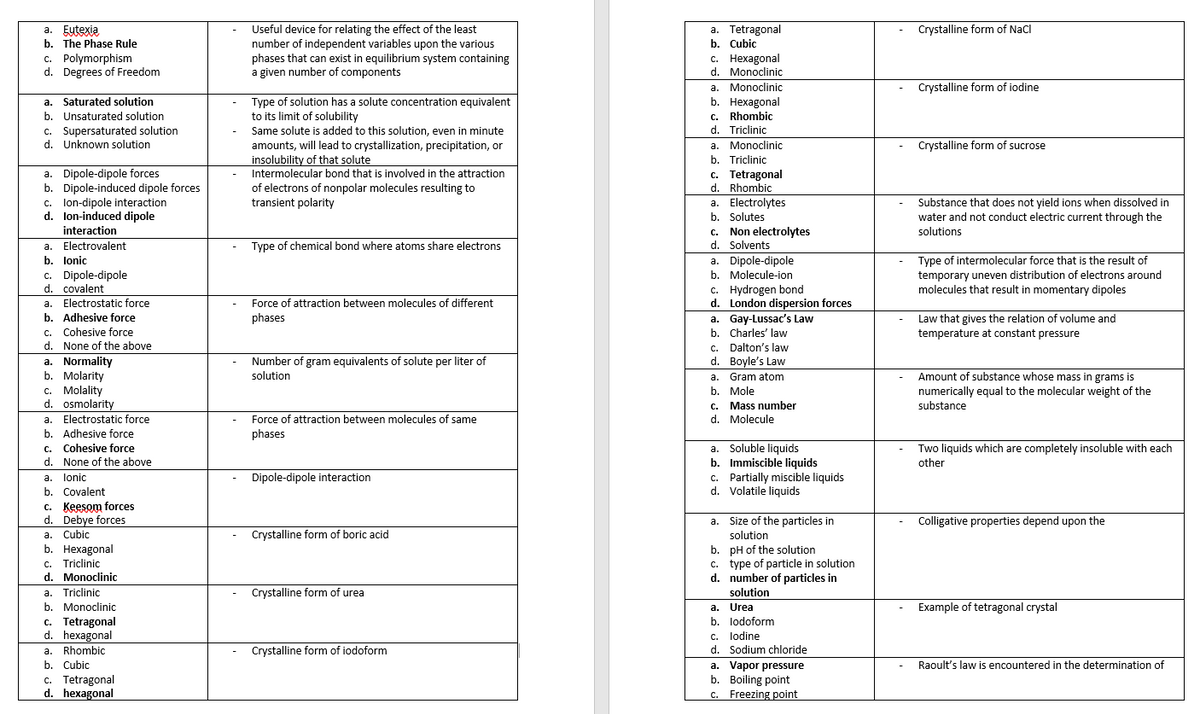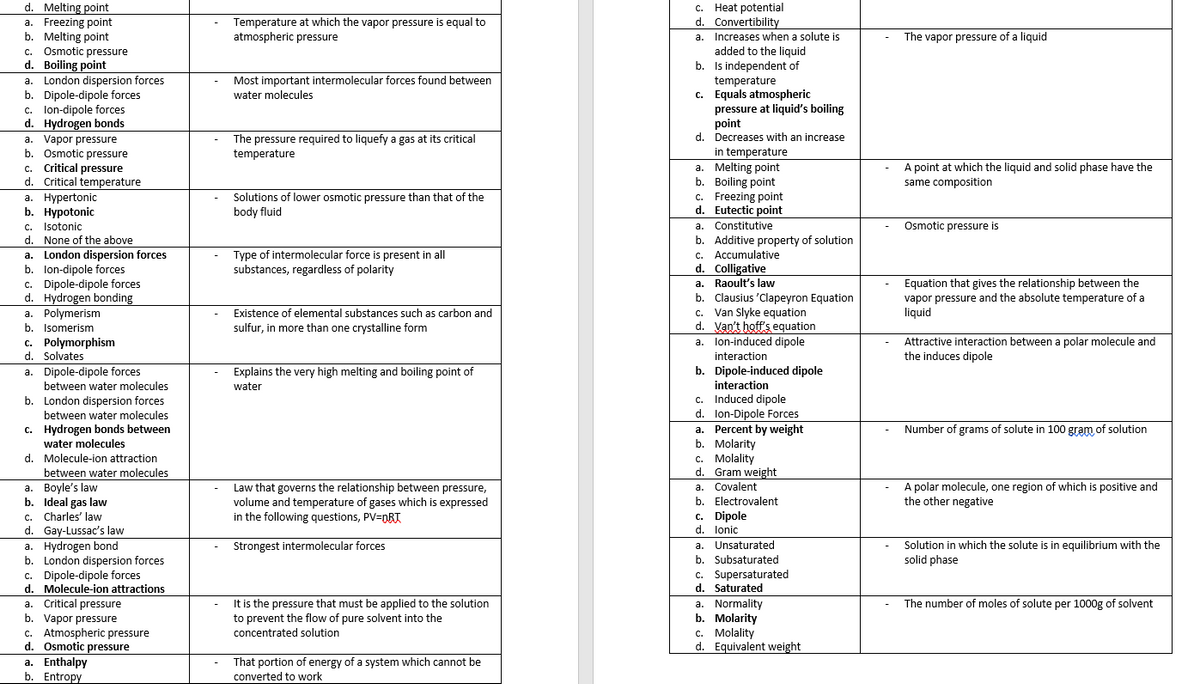a. Eutexia b. The Phase Rule c. Polymorphism d. Degrees of Freedom Useful device for relating the effect of the least number of independent variables upon the various phases that can exist in equilibrium system containing a given number of components Type of solution has a solute concentration equivalent to its limit of solubility a. Saturated solution b. Unsaturated solution c. Supersaturated solution d. Unknown solution a. Dipole-dipole forces b. Dipole-induced dipole forces c. lon-dipole interaction d. lon-induced dipole interaction Same solute is added to this solution, even in minute amounts, will lead to crystallization, precipitation, or insolubility of that solute Intermolecular bond that is involved in the attraction of electrons of nonpolar molecules resulting to transient polarity
Electronic Effects
The effect of electrons that are located in the chemical bonds within the atoms of the molecule is termed an electronic effect. The electronic effect is also explained as the effect through which the reactivity of the compound in one portion is controlled by the electron repulsion or attraction producing in another portion of the molecule.
Drawing Resonance Forms
In organic chemistry, resonance may be a mental exercise that illustrates the delocalization of electrons inside molecules within the valence bond theory of octet bonding. It entails creating several Lewis structures that, when combined, reflect the molecule's entire electronic structure. One Lewis diagram cannot explain the bonding (lone pair, double bond, octet) elaborately. A hybrid describes a combination of possible resonance structures that represents the entire delocalization of electrons within the molecule.
Using Molecular Structure To Predict Equilibrium
Equilibrium does not always imply an equal presence of reactants and products. This signifies that the reaction reaches a point when reactant and product quantities remain constant as the rate of forward and backward reaction is the same. Molecular structures of various compounds can help in predicting equilibrium.
Encircle the answers here


Step by step
Solved in 2 steps






